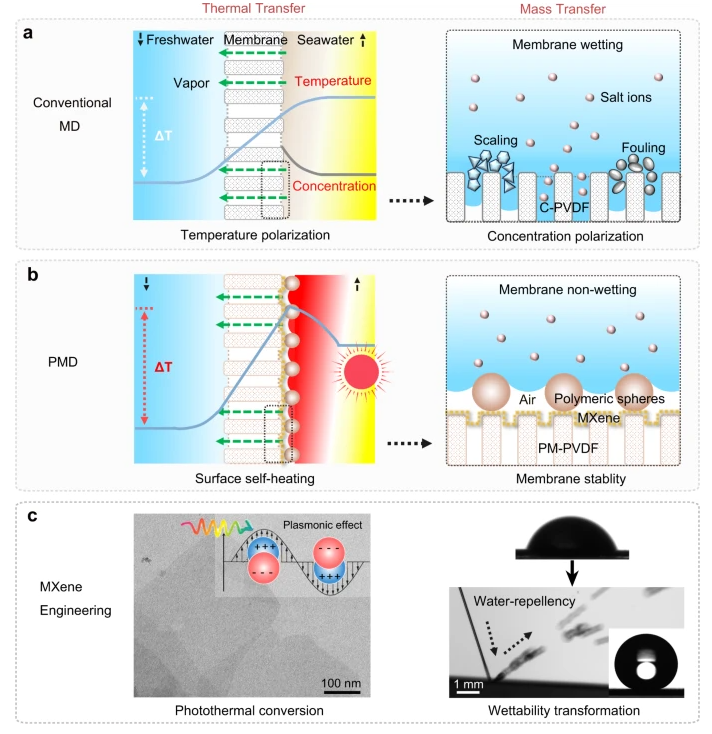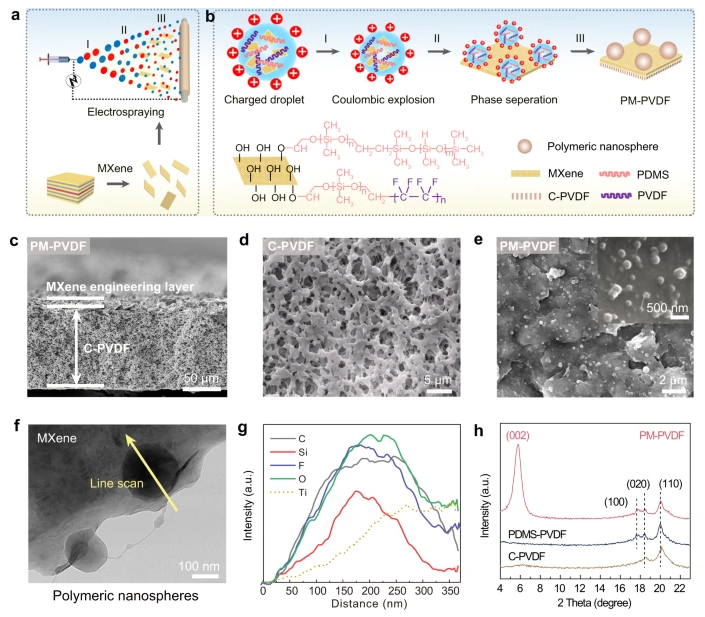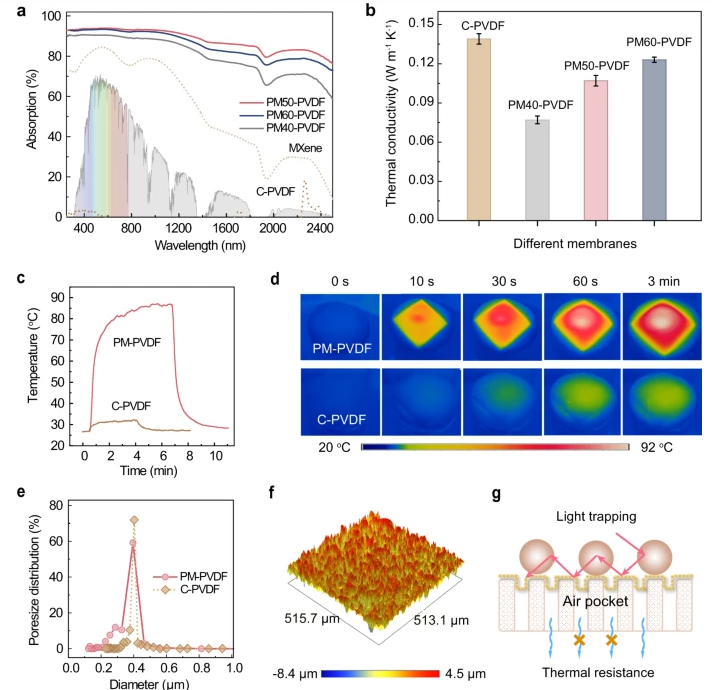
hotline:
17715390137
Tel/Wechat:
18101240246 (Technology)
0512-68565571
Email:mxenes@163.com (Sales Engineer)bkxc.bonnie@gmail.com
Scan the code to follow or search the official account on WeChat:
2D Materials Fronrier After paying attention,
click on the lower right corner to contact us,
Enter enterprise WeChat.
Professional Services Online

已传文件:photo/1690267020.jpeg
 16902670202.jpeg
Abstract
16902670202.jpeg
Abstract
Owing to its 100% theoretical salt rejection capability, membrane distillation (MD) has emerged as a promising seawater desalination approach to address freshwater scarcity. Ideal MD requires high vapor permeate flux established by cross-membrane temperature gradient (∆T) and excellent membrane durability. However, it’s difficult to maintain constant ∆T owing to inherent heat loss at feedwater side resulting from continuous water-to-vapor transition and prevent wetting transition-induced membrane fouling and scaling. Here, we develop a Ti3C2Tx MXene-engineered membrane that imparts efficient localized photothermal effect and strong water-repellency, achieving significant boost in freshwater production rate and stability. In addition to photothermal effect that circumvents heat loss, high electrically conductive Ti3C2Tx MXene also allows for self-assembly of uniform hierarchical polymeric nanospheres on its surface via electrostatic spraying, transforming intrinsic hydrophilicity into superhydrophobicity. This interfacial engineering renders energy-efficient and hypersaline-stable photothermal membrane distillation with a high water production rate under one sun irradiation.

Fig. 1: Design concept of the PM-PVDF membrane for PMD.

Fig. 2: Fabrication and structural characterization of membranes.

Fig. 3: Photothermal effect and thermal conductivity of membranes.

Fig. 4: Water repellency and membrane wetting resistance.

Fig. 5: Demonstration on performance of hypersaline desalination by PMD.

| Reminder: Beijing Beike New Material Technology Co., Ltd. supplies products only for scientific research, not for humans |
| All rights reserved © 2019 beijing beike new material Technology Co., Ltd 京ICP备16054715-2号 |